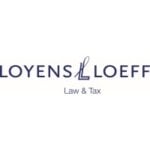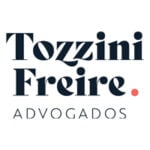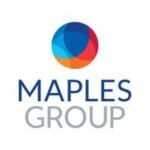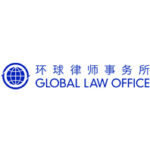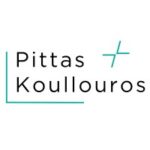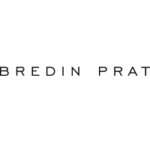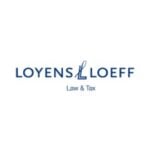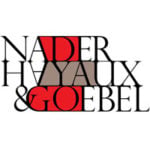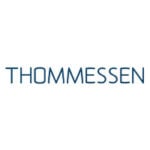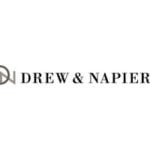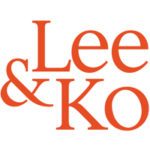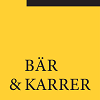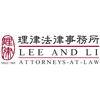-
What proportion of transactions have involved a financial sponsor as a buyer or seller in the jurisdiction over the last 24 months?
The Malaysian market has seen robust M&A activities involving financial sponsors in the past 2 years (year 2023 and year 2024), primarily in the consumer, healthcare and industrial sectors. Among the notable deals, as announced publicly, are:
- Disposal by Affinity Equity Partner of its entire equity interest in Island Hospital to IHH Healthcare, a deal worth USD966 million.
- Acquisition by Columbia Asia Healthcare, backed by TPG (a US private equity firm), of the entire equity interest in Ramsay Sime Darby Healthcare for USD 1.3 billion.
- Acquisition by a consortium led by TPG of International Medical University worth USD306.1 million.
- Investment of USD400 million by KKR, a US private equity firm, into OMS Group, a Malaysia subsea cable installer.
- Disposal by KKR of its entire equity interest in Westar Aviation Services Sdn Bhd, the largest helicopter provider for offshore energy industry in Southeast Asia
- Acquisition by funds affiliated with DigitalBridge Group of a majority stake in AIMS Asia Group, a Malaysian data center operator for MYR2 billion.
- A voluntary takeover offer proposal made by a consortium participated by Global Infrastructure Partners, an infrastructure investment fund, of Malaysia Airports Holding for approximately USD2.6 billion
-
What are the main differences in M&A transaction terms between acquiring a business from a trade seller and financial sponsor backed company in your jurisdiction?
Deal certainty, mitigating risk and maximizing return of investment are among the common themes appearing in M&A transaction involving financial sponsor backed company.
As financial sponsor, it has less to nil sense of emotional attachment to the business. Given this, the exit will normally be a full exit from the business. In contrast, considering that the trade seller may have strong emotional attachment to the business, often the exit is not a full exit. The trade seller may retain certain percentage of equity interest in the business or remain as key personnel in the management of the business.
In addition, the exit valuation undertaken by the financial sponsor is typically done objectively with the aim of maximizing financial return. This includes the readiness of the financial sponsors to adopt a complex deal structure with the aim to minimize, among others, tax exposure. Although the trade seller would similarly want to maximise the return, the valuation may include subjective elements, e.g. the ask for the purchaser to pay premium fee to “detach” the trade seller from the business. The trade seller may also prefer a simple and straight forward deal structure.
From the perspective of the conduct of the sale, customarily, the process will be more structured and rigorous. It may involve an auction process in order to allow the financial sponsor to get the best deal on the table. The trade seller, on the other hand, would typically prefer a simple and less formal process.
To ensure deal certainty, the conditions precedent in a deal involving company backed by financial sponsor are typically limited to key third party approvals, mainly approvals from regulator (if any) and a few other important third parties. Further, the agreement will normally be structured to limit the ability of the parties to “kill” the deal.
-
On an acquisition of shares, what is the process for effecting the transfer of the shares and are transfer taxes payable?
The legal title to the shares acquired by the purchase will only be passed upon the name of the purchaser is entered into the register of members of the Malaysian company. In order for the name to be entered into the register of members, the following steps need to be undertaken:
- The seller and the purchaser to fill in and execute a statutory shares transfer form. The seller will typically prepare this form and release it to the purchaser on completion of the share purchase agreement in exchange of the payment of purchase consideration by the purchaser.
- Upon receipt of the form, the purchase will counter-sign it and submit the same to the Inland Revenue Board of Malaysia for adjudication of stamp duty.
- Once the Inland Revenue Board of Malaysia issue a notice of assessment of the stamp duty, the purchaser is required to pay the stamp duty within 30 days from the notice of assessment.
- The purchaser will present the duly stamped statutory share transfer form to the Malaysian company and the company secretary will update the register of members to reflect that the purchaser is the legal owner of the shares acquired.
As noted above, there is stamp duty payable for transfer of shares. The current rate is 0.3% of the transaction value which is pegged to the purchase consideration, or the market value of the shares acquired, whichever is higher.
Effective from 1 January 2024, a new capital gains tax has been introduced where any gains or profits deriving from the disposal of capital asset are treated as income chargeable with income tax under the Income Tax Act 1967. Taxable capital assets are shares of unlisted Malaysian company, shares of controlled company incorporated outside Malaysia that derives its value from real property in Malaysia or shares of another controlled company or both. The rate of tax for capital assets acquired prior to 1 January 2024 is either 10% of the chargeable income from the disposal of the capital asset or 2% of the gross proceeds from the disposal of the capital asset. For capital assets acquired after 1 January 2024, the tax rate is 10% of the chargeable income from the disposal of the capital asset.
For completeness purposes, shares listed on Bursa Malaysia Securities Berhad (i.e. the stock exchange of Malaysia) are held electronically in CDS (Central Depository System) accounts managed by Bursa Depository. The sale and purchase of the listed shares is undertaken via direct business transaction in accordance with the rules of Bursa Malaysia Securities Berhad. The delivery and settlement of any transfer of these shares will be undertaken through the clearing house of Bursa.
-
How do financial sponsors provide comfort to sellers where the purchasing entity is a special purpose vehicle?
Customarily, where the purchasing entity is a special purpose vehicle, the financial sponsors will provide an equity commitment letter (“ECL”) where the financial sponsor undertakes to fund the special purpose vehicle of any amount it requires to, among others, pay the purchase consideration to the sellers or pay the investee company for any capital call or pay any damages. Where the settlement of the purchase consideration for acquisition is structured to be a combination of equity and debt financing, the purchasing entity will procure a form of debt commitment letter from the financier in addition to the ECL to be issued by the financial sponsors.
-
How prevalent is the use of locked box pricing mechanisms in your jurisdiction and in what circumstances are these ordinarily seen?
The locked box mechanism is prevalent in M&A transaction that is straight forward and can be closed relatively quick. Typically, this involves sale of a target company with business that is less regulated, hence having a short list of conditions precedent to be fulfilled. Considering the short period to close the transaction, generally it is easier to manage the potential risk of undue leakage or extraction of value from the target company during such short period. In contrast, where the business of the target company is heavily regulated or subject to the purview of multiple regulators, it is more common for completion accounts mechanism to be adopted instead. The M&A transaction involving this type of company would typically be subject to multiple regulatory approvals, thus lengthening the process to close the transaction. Generally, where parties anticipate that closing will likely occur after 3 or 4 months from the signing, a completion accounts mechanism will be preferred so that the purchase price reflects the true value of the target company or the shares to be acquired.
In addition, the determination whether to adopt a locked box mechanism or completion accounts mechanism would also depend on the structure of the M&A transaction. The locked box mechanism is typically preferred in an auction process (led by financial sponsors) as it allows the seller to easily compare the value of the target company as presented by the bidders and the price the bidders are willing to pay for the shares to be sold. Further, where certainty is key to the seller, the locked box mechanism will be able to achieve this as the seller would know upfront the amount that it will receive on completion since the purchase price will not be subject to adjustment, which may have the risk of dispute.
-
What are the typical methods and constructs of how risk is allocated between a buyer and seller?
Risks are allocated between the buyer and seller through various mechanics in the transaction agreement. Depending on the risk appetite and leverage in negotiation, typical mechanics are, conditions precedent, pre-completion covenants or undertakings, representations and warranties, indemnities, termination rights, earn outs and adjustment to purchase consideration.
The seller will normally resist inclusion of provisions that impact deal certainty. These generally include provisions on conditions precedent and termination right of the buyer. The seller may be willing to consider inclusion of conditions precedent that are material to the transaction such as regulatory approvals. Any approval or consent from third parties for the transaction will be strictly limited to those that are fundamental the business of the target company. Consequently, the buyer will be assuming risk for non-obtainment of non-fundamental approvals (if any). In respect of the termination right, the seller will prefer to limit the rights to events impacting the ability of the seller to sell or the target company to continue the business such as liquidation. Inclusion of termination right due to the occurrence of material adverse event would normally be heavily negotiated and carve-outs may likely be included.
In addition to the above, the seller would also be less receptive on inclusion of provisions that give rise to unlimited post-completion liabilities. Thus, inclusion of general indemnity would be strongly resisted by the seller. However, the seller may be able to accommodate specific indemnities only to the extent that those specific indemnities are for material issues identified during the conduct of due diligence by the buyer. Any potential risk arising from issues that are not considered to be material will therefore be assumed by the buyer. Similarly, the seller would be cautious in agreeing to provide comprehensive business warranties. Often the seller will qualify the warranties by including carve-outs such as items disclosed during due diligence and/or in the disclosure letter as well as building in knowledge qualifier to certain business warranties. It is also typical for the seller to issue the disclosure letter which has the effect of qualifying the warranties twice, i.e. one at the point of signing the acquisition agreement and the other one at the point closer to closing. The seller would customarily include provisions on limitation of liabilities where the buyer’s ability to bring action against the seller will be limited in time and value.
Where the purchase consideration is determined based on the locked box mechanism, the buyer will likely include pre-completion covenants provision to ensure that there is no leakage or extraction of value from the target company prior to closing. These covenants will require the seller to ensure that the target company is managed in the usual and ordinary course. Anything that departs from the usual and ordinary course will be subject to the consent of the buyer. Sellers who are keen for deal certainty will likely limit the recourse of the buyer arising from the breach of the pre-completion covenant to damages only to the exclusion of termination right.
-
How prevalent is the use of W&I insurance in your transactions?
The use of W&I insurance in Malaysia has gained recognition by the corporate players. The use of it may be seen, particularly, in M&A transaction where the financial sponsor wishes to have a clean exit from the investee company (e.g. no escrow arrangement post-closing or limit the post-closing liability). Typically, in an auction process, the W&I insurance is arranged by the seller at the outset as stapled sellside policy which later ‘flips’ to the preferred bidder.
-
How active have financial sponsors been in acquiring publicly listed companies?
Takeover of publicly listed companies in Malaysia is predominantly undertaken by local corporate players and Government-linked companies only. Generally, it is observed that financial sponsors’ attention in Malaysian market is focused on private transactions. Nonetheless, a recent notable involvement of financial sponsor in takeover of publicly listed company can be seen in the conditional voluntary takeover offer of the entire ordinary shares in Malaysia Airports Holdings Berhad. This takeover was launched by a consortium jointly established by Global Infrastructure Partners, Khazanah Nasional Berhad (a sovereign wealth fund of the Government of Malaysia) and Employees Provident Fund (a federal statutory body).
-
Outside of anti-trust and heavily regulated sectors, are there any foreign investment controls or other governmental consents which are typically required to be made by financial sponsors?
There is no single legislation or regulation that govern all foreign investments in Malaysia. Generally, foreign investment is not restricted, save for certain sectors where the relevant foreign investment restriction can be found in sector-specific regulations or license, registration, approval or permits issued or administered by the sectoral regulators or agencies. In addition, there are certain sectors where there are stipulations for a minimum level of Malaysian or Bumiputera equity participation.
-
How is the risk of merger clearance normally dealt with where a financial sponsor is the acquirer?
Currently, there is no general merger control regime that requires a merger notification or approval to be filed with the Malaysia Competition Commission (“MyCC”) under the Competition Act 2010 (“Competition Act”). However, the MyCC has taken steps to amend the Competition Act and among the key amendments proposed is the introduction of the merger control regime. The merger control regime, if passed by the parliament, would bring the effect that any merger or anticipated merger that results in a substantial lessening of competition in any market for goods or services will be prohibited, unless the economic efficiencies of the merger outweigh any adverse effect caused by the transaction. Public consultation was carried out by MyCC in 2022, but, as at 2024, the amendments have yet to be tabled to the Parliament.
It is to be noted that the Competition Act applies generally to all sectors except for those carved out by sector-specific competition law, namely, the network communication and broadcasting sector, energy sector and aviation service sector. It is to be noted further that there is a voluntary merger approval regime provided under the legislations for network communication and broadcasting sector (enforced by the Malaysian Communications and Multimedia Commission, “MCMC”), and aviation service sector (enforced by the Malaysian Aviation Commission, “MAVCOM”).
Any deal requiring merger control clearance will typically dealt with as a condition precedent to closing. This can be seen in the merger of Celcom Axiata Berhad and Digi.Com Berhad where the relevant approval of MCMC pursuant to Guidelines on Mergers and Acquisition was made a condition precedent to closing. In the voluntary takeover offer of Malaysia Airports Holdings Berhad, the non-infringement decision from MAVCOM pursuant to the Malaysian Aviation Commission Act 2015 was made a pre-condition to the voluntary takeover offer to be made.
-
Have you seen an increase in (A) the number of minority investments undertaken by financial sponsors and are they typically structured as equity investments with certain minority protections or as debt-like investments with rights to participate in the equity upside; and (B) ‘continuation fund’ transactions where a financial sponsor divests one or more portfolio companies to funds managed by the same sponsor?
In 2024, there has been a notable increase in minority investments in Malaysia, as financial sponsors are increasingly focusing on growth-stage enterprises within the technology, fintech, and other emerging sectors. These investments are primarily organized as equity stakes that include minority protections, such as veto rights, preemptive rights, and representation on the board, allowing financial sponsor to influence company decisions while capitalizing on potential gains. Additionally, there is a growing trend towards the use of debt-like instruments, including convertible loans, preference shares, and warrants, which provide sponsors with the security associated with debt while also offering the possibility of conversion into equity for enhanced future returns.
There is anticipated to be a rise in continuation fund transactions. This trend is largely attributed to a deceleration in conventional exit strategies, such as sales and initial public offerings (IPOs), which has been noted during the first half of 2024. Factors such as market uncertainty and domestic challenges, including the depreciation of the Ringgit, have complicated the ability of financial sponsors to divest their investments through traditional means. Consequently, sponsors are increasingly exploring secondary transactions and continuation funds as viable alternatives. These strategies enable sponsors to maintain control over their portfolio companies, allowing for extended holding periods instead of divesting in a less advantageous market. This trend is expected to persist into 2025 as sponsors seek improved market conditions that may yield greater returns.
-
How are management incentive schemes typically structured?
Besides the traditional monetary rewards, equity incentive plans are quite common for management incentive scheme in Malaysia. The objective of the plan is to enhance the employee’s motivation and fostering a culture of ownership within the company. These plans are strategically structured to align employees’ goals with the broader objectives of the business, offering a tangible way for employees to share in the company’s growth and profitability.
The common equity incentive plans are the employee share option scheme (“ESOS”) and employee share grant plan (“SGP”). Pursuant to ESOS employees (typically senior management) are vested with options to acquire shares of the company at a set price, generally lower than the market value, within a designated period. The SGP, on the other hand, grant the employees with free shares. The shares can be actual shares of the company or, where the company does not wish to have dilution in shareholding of the owner(s), phantom shares. The terms of the ESOS and SGP will customarily be included in the by-laws governing the ESOS and SGP. Among the key terms are the period in which the employees can exercise the option under ESOS or of be vested with the shares under SGP which is typically spread out over a few years and subject to the company achieving certain financial targets.
-
Are there any specific tax rules which commonly feature in the structuring of management's incentive schemes?
The common tax consideration in structuring equity incentive scheme relates to the classification of the share options. From the perspective of the employer, appropriate classification is important as it will impact the determination whether the share options are considered as non-deductible expenses for the company or otherwise. For the employees who exercise the option will be subject to income tax (the rates ranging from 0 to 30%) on the difference between the market value of the shares at the time of the exercise and the option exercise price.
-
Are senior managers subject to non-competes and if so what is the general duration?
Non-compete obligation are quite common, and this is ordinarily included in employment contract of the senior managers. Customarily the restriction applies throughout the employment. Where the non-complete continues to be applied post-employment, such restriction may be challenged and often found by the courts in Malaysia to be void. Nonetheless, acknowledging the importance of striking a balance between protecting the company’s confidential information or trade secret, and the legal rights of the outgoing employees to carry on his trade or profession, alternative ways are adopted by imposing confidentiality obligation on the outgoing employees restricting the employees from divulging or misusing the former employer’s confidential information or trade secrets.
-
How does a financial sponsor typically ensure it has control over material business decisions made by the portfolio company and what are the typical documents used to regulate the governance of the portfolio company?
If the financial sponsor is the majority shareholder, it typically controls the board of directors of the portfolio company by having the right to appoint majority of the board. It is also common for the financial sponsor to ask for certain key executive positions to be allocated to it.
On the other hand, if the financial sponsor is a minority shareholder, it will still have board representation (although does not control the board) and would have a list of reserved matters, the implementation of which is subject to its prior approval.
The foregoing rights are typically stipulated in shareholders’ agreement. Where the company adopts a constitution, the constitution will be amended to embed the rights of the financial sponsors provided in the shareholders’ agreement.
-
Is it common to use management pooling vehicles where there are a large number of employee shareholders?
Yes, particularly if there are many management/employee shareholders. It is also preferred in order to streamline governance and reduce administrative complexity by consolidating individual employee shareholdings into a single entity.
-
What are the most commonly used debt finance capital structures across small, medium and large financings?
Where the size of fund required is small or medium, typically the fund is obtained from the shareholders through equity financing. However, depending on the gearing of the company, obtaining debt financing from banks is also appropriate.
Where the size of the fund required is large, the common financing structure is syndicated loans or financing from multiple lenders, mezzanine financing, project financing, bonds or sukuk. In syndication loan or financing structure, often a bridging financing is granted in interim due to confidentiality of the deal and speed, which will then be refinanced by the syndicated loan or financing.
-
Is financial assistance legislation applicable to debt financing arrangements? If so, how is that normally dealt with?
The Malaysian Companies Act 2016 prohibits a company from providing any financial assistance (whether directly or indirectly) for the purpose of purchasing or subscribing to shares in the company or its holding company. The term “indirect” is meant to capture the provision of financial assistance via means other than provision of money to the acquirer or subscriber, such as the use of the company’s assets as security for the debt financing taken by the acquirer. Given this, any debt financing taken by the acquirer will be secured by the assets of the acquirer itself which may include the shares of the acquirer in the target company.
Nonetheless, there are ‘whitewash’ procedures in the Malaysian Companies Act which essentially allow the provision of financial assistance. Among the key requirements to invoke this ‘whitewash’ procedures are the requirement that the total amount of financial assistance that has not been repaid does not exceed 10% of the aggregate amount received by the company in respect of the issue of shares and reserves of the company based on the most recent financial statements of the company, and that each director who voted in favor of the financial assistance is required to make a solvency statement.
-
For a typical financing, is there a standard form of credit agreement used which is then negotiated and typically how material is the level of negotiation?
There is no general standard form of credit or financing agreement applicable to all lenders, as each lender would have its own template. However, it is common for the lenders to adopt the form of facility documentations published by Asia Pacific Loan Market Association as a base. The level of negotiation depends on various factors, including the identity and creditworthiness of the borrower and its sponsors, complexity and size of the deal and financing.
-
What have been the key areas of negotiation between borrowers and lenders in the last two years?
The common themes for negotiation are financial covenants, carve-outs from certain negative covenant such as allowance for internal reorganization of the borrower, flexibility on extension of maturity dates, prepayment events, transferability of the loan or financing.
-
Have you seen an increase or use of private equity credit funds as sources of debt capital?
The interest in using private equity credit fund continues to subsist. However, it is not common as there might be regulatory hurdles relating to the requirement to be a licensed moneylender.
Malaysia: Private Equity
This country-specific Q&A provides an overview of Private Equity laws and regulations applicable in Malaysia.
-
What proportion of transactions have involved a financial sponsor as a buyer or seller in the jurisdiction over the last 24 months?
-
What are the main differences in M&A transaction terms between acquiring a business from a trade seller and financial sponsor backed company in your jurisdiction?
-
On an acquisition of shares, what is the process for effecting the transfer of the shares and are transfer taxes payable?
-
How do financial sponsors provide comfort to sellers where the purchasing entity is a special purpose vehicle?
-
How prevalent is the use of locked box pricing mechanisms in your jurisdiction and in what circumstances are these ordinarily seen?
-
What are the typical methods and constructs of how risk is allocated between a buyer and seller?
-
How prevalent is the use of W&I insurance in your transactions?
-
How active have financial sponsors been in acquiring publicly listed companies?
-
Outside of anti-trust and heavily regulated sectors, are there any foreign investment controls or other governmental consents which are typically required to be made by financial sponsors?
-
How is the risk of merger clearance normally dealt with where a financial sponsor is the acquirer?
-
Have you seen an increase in (A) the number of minority investments undertaken by financial sponsors and are they typically structured as equity investments with certain minority protections or as debt-like investments with rights to participate in the equity upside; and (B) ‘continuation fund’ transactions where a financial sponsor divests one or more portfolio companies to funds managed by the same sponsor?
-
How are management incentive schemes typically structured?
-
Are there any specific tax rules which commonly feature in the structuring of management's incentive schemes?
-
Are senior managers subject to non-competes and if so what is the general duration?
-
How does a financial sponsor typically ensure it has control over material business decisions made by the portfolio company and what are the typical documents used to regulate the governance of the portfolio company?
-
Is it common to use management pooling vehicles where there are a large number of employee shareholders?
-
What are the most commonly used debt finance capital structures across small, medium and large financings?
-
Is financial assistance legislation applicable to debt financing arrangements? If so, how is that normally dealt with?
-
For a typical financing, is there a standard form of credit agreement used which is then negotiated and typically how material is the level of negotiation?
-
What have been the key areas of negotiation between borrowers and lenders in the last two years?
-
Have you seen an increase or use of private equity credit funds as sources of debt capital?


